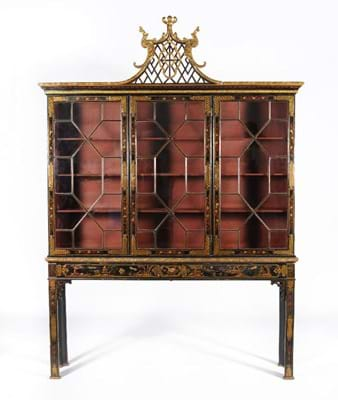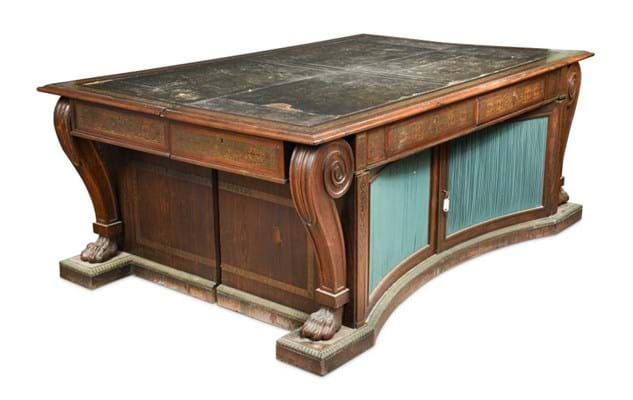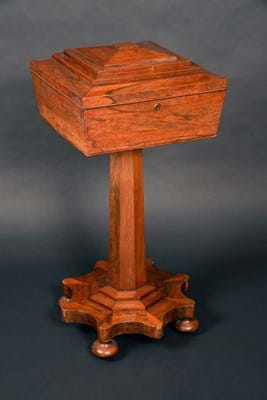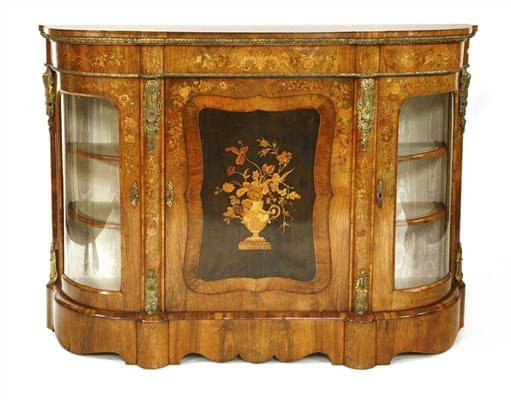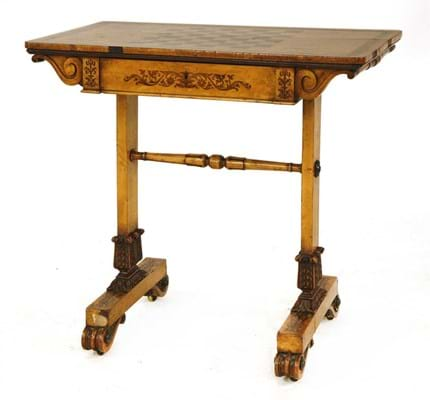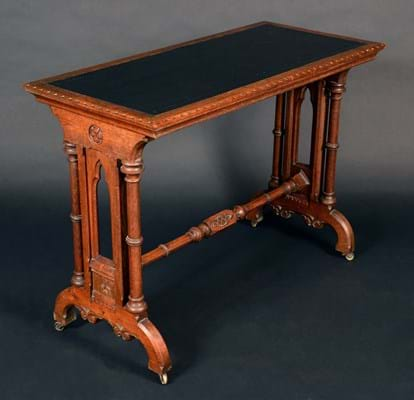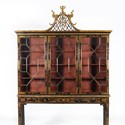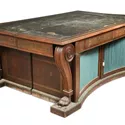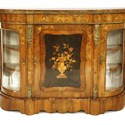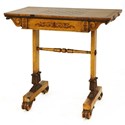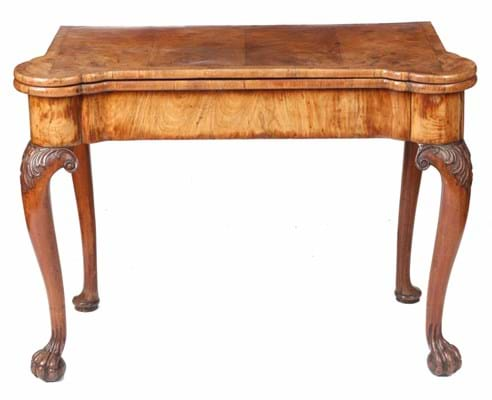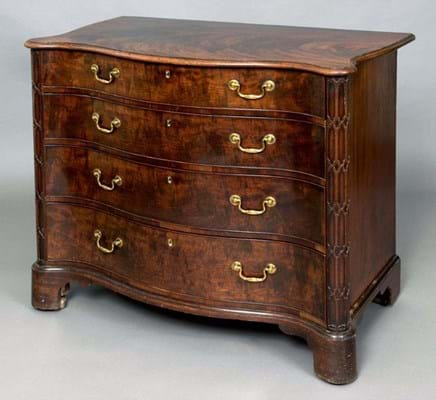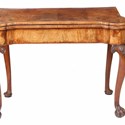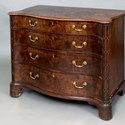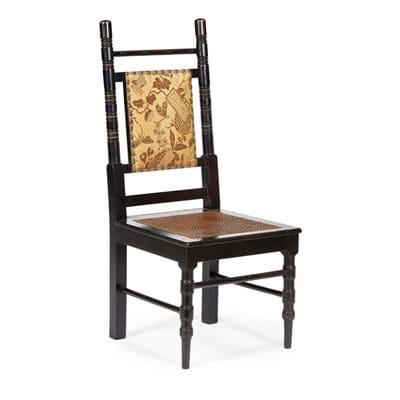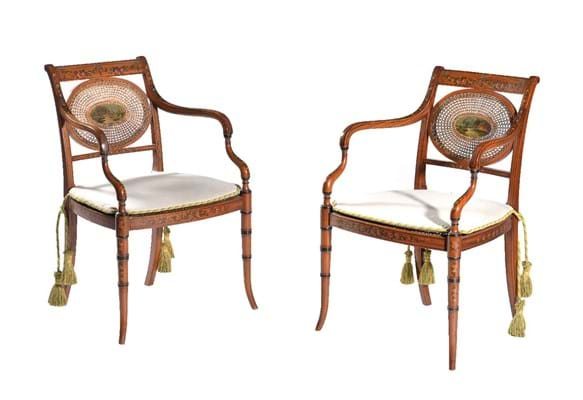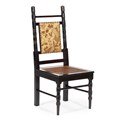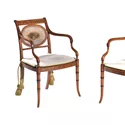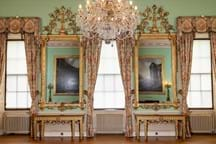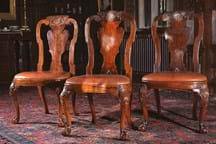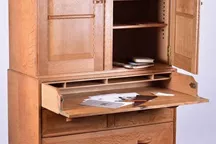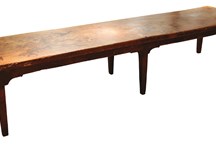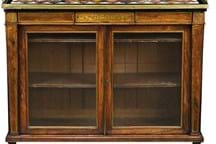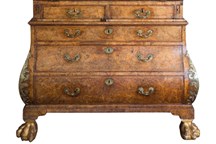Practical, stylish and often surprisingly affordable, antique furniture remains a popular area both for collectors and also for buyers looking to furnish their homes. The fact that antique furniture also represents a ‘green’ option compared to buying modern flatpack piece has also brought additional attention to the area.
A key part of auctions and dealers' sales up and down the country, the sector ranges from items such as Windsor chairs to Yorkshire favourite Mouseman.
Pieces by famous makers such as Chippendale and Gillows naturally command high prices but modern vintage furniture has also come to the fore more recently.
The term ‘brown furniture’ refers to traditional pieces made from dark woods such as mahogany, while pieces made from native woods like oak and walnut are sometimes referred to as ‘vernacular furniture’.
British formal furniture
Central to the remarkable longevity of what is often dubbed the English country house style is the furniture produced in Britain from the late 17th to the early 20th century.
These two-and-a-half centuries spawned some of the best-loved and most enduring of all cabinetmaking designs – with the Georgian era in particular the source of some of the finest furniture ever made.
The subject comes with a deep collecting history – and its own vocabulary.
Traditionally British furniture is catalogued according to period and specifically with the name of a monarch. Not only does this provide an approximate date for manufacture but the epithets William & Mary, Queen Anne, Georgian and Victorian also imply distinct decorative styles that reflect changes in society, fashion, materials, cabinetmaking techniques and international trade.
Many pieces are dated on these grounds. There is, for example, a simple distinction to be drawn between furniture made from largely indigenous woods (predominantly oak and walnut) and the age of mahogany that arrives in the 1740s following trade with the West Indies.
Prevailing styles
Some of the prevailing styles – accompanied by terminology referencing everything from leg shapes to marquetry inlays – enjoyed great longevity. Other fashions overlapped or were periodically revived by later generations.
The popular furniture patterns of the 18th century alone include Baroque, Palladian, Rococo, Chinoiserie, Gothic and Neoclassicism (many of them reproduced in the 19th and 20th centuries).
The sole defining characteristic of the great melting pot of the Victorian period is eclecticism.
Some popular styles are closely associated with successful makers and designers, from George Hepplewhite to William Morris. In this way many pieces are catalogued as ‘Chippendale’ not because they were made at Thomas Chippendale’s London workshop but because they follow a design that appeared in his hugely influential pattern book The Gentleman & Cabinet-Maker’s Director.
Even pieces known to have come from important cabinetmakers were typically made by apprentices and journeymen. Chippendale, like his contemporaries in the furniture trade, was what today might be called a ‘facilitator’: an overseer of business and manager of clients rather than a worker at the bench.
Most pieces are likely to remain anonymous. Unlike in France, where ‘ébénistes’ were encouraged to stamp their wares, marked or labelled pieces of British antique furniture are scarce. The Lancaster and London firm of Gillows was pretty much unique in its propensity to mark many of the pieces that left its workshops from c.1785 onwards.
More typically, attributions to well-known 18th and 19th century cabinetmaking shops are based on connoisseurship and extrapolations based on the close study of a handful of pieces that survive with a documentary provenance.
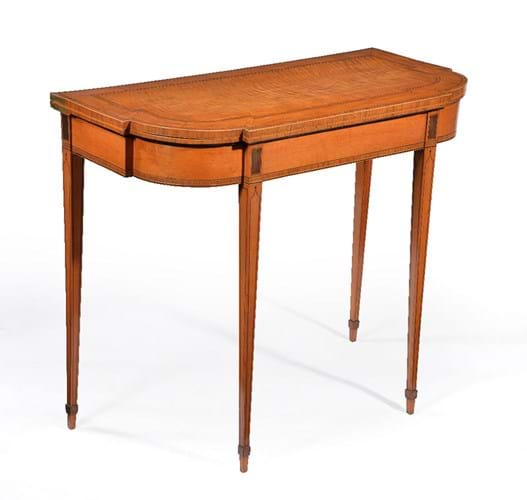
A George III satinwood, tulipwood banded and line inlaid card table, c.1790, in the manner of Thomas Sheraton. It sold for a hammer price of £750 at Dreweatts of Donnington Priory in April 2019.
Grades of sophistication
In reality, the furnishings made for the country estates and London homes of the fashionable Georgian elite – the stuff of showpiece sales in Mayfair or St James’s – represent the tip of the antique furniture iceberg.
From the Tudor to the Edwardian periods, many grades of sophistication exist. The vast majority of antique furniture in the market was made for a rapidly growing urban population and the ‘middling sort’ that accompanied revolutions in agriculture and industry.
Some was the ‘common furniture’ made by leading workshops for a price-conscious clientele, others made by ‘second-tier’ regional and metropolitan workshops, yet more by the jobbing estate cabinetmakers that were part of the rural economy into the 20th century.
The advent of industrialisation and mass production – and particularly the arrival of the mechanical circular saw and machine-cut veneers – also helped to satisfy the fashionable aspirations of clients with unequal incomes.
The market
For more than a century, ‘fine’ English furniture has been at the academic and commercial heart of the British antiques trade.
Attempts to chart the history of the medium from its medieval beginnings to its apogee in the Georgian era yielded some of the first books on British ‘antiques’. Probably more has been written on the subject than any other aspect of the British decorative arts.
This is a market that rose in the 1970s-80s at a pace that made antique furniture a better investment than shares and property but one that has changed in the past two decades.
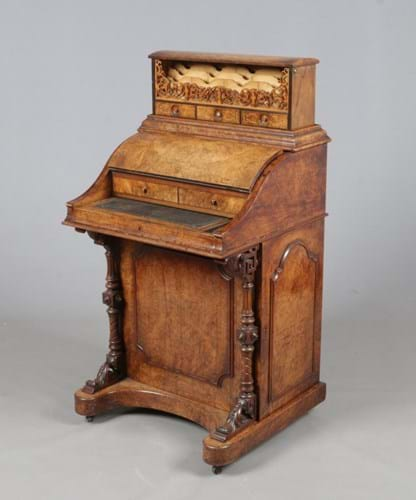
A decade or so again a Victorian burr walnut ‘jack in the box’ davenport writing desk such as this might have cost £2000-3000. This example sold for a hammer price of £800 at Thurcroft saleroom Paul Beighton in May 2019.
The more recent decline in prices has been particularly marked among some categories of ‘brown’ furniture – the unlovely term used to describe the fine-quality Georgian and Victorian mahogany chattels loved and admired by generations of English-speaking families.
The Antique Furniture Index monitored the prices of a ‘basket’ of typical pieces of 18th and 19th century furniture. Starting in 1968, it reached a high in 2002, but dropped down 45% from its peak by the time its compiler John Andrews decided to end his annual audit of the trade in 2016.
Affordable furniture
Of course, no cold analysis of prices can factor in the enormous pleasure British antique furniture – surely the most practical of all antiques – provides to its owners over the years.
And with prices bottoming out a year or two ago, few would disagree that now is an excellent time to buy. There are fewer designated furniture sales in London than was the norm a generation ago but in the regional salerooms, large quantities of material on all price levels are regularly sold.
Bargains are plentiful among many forms from breakfront bookcases to davenports and Pembroke tables that have fallen from favour as tastes and lifestyles change.
Plenty is on offer for modest three-figure sums. Many buyers now look for just two or three signature antique pieces rather than yearning to recreate the period room.
Quality is king. Some exceptional-quality pieces were created (often with the aid of machinery) in the late-19th and early-20th century and these can often bring more than a pedestrian Georgian exemplar.
Importance of condition
A premium will be paid for the piece that has escaped the episodes of restoration and refinishing common to most centuries’ old pieces. A good surface patina greatly enhances the character, authenticity and value of all antique furniture and every reasonable step should be taken to preserve it.
This counts for all periods but is perhaps most obvious in the market for period oak and walnut where the price of the untouched survivor can be 10-fold that of an outwardly similar ‘decorating’ piece.
More recently, the wider consumer market is waking up to the green credentials inherent in antique furniture.
Scientific analysis has shown that the carbon footprint of Georgian chest of drawers is a tiny fraction (one-fifteenth) of that created by its new flatpack alternative. It is just another reason those championing the market believe prices will rebound soon enough.


